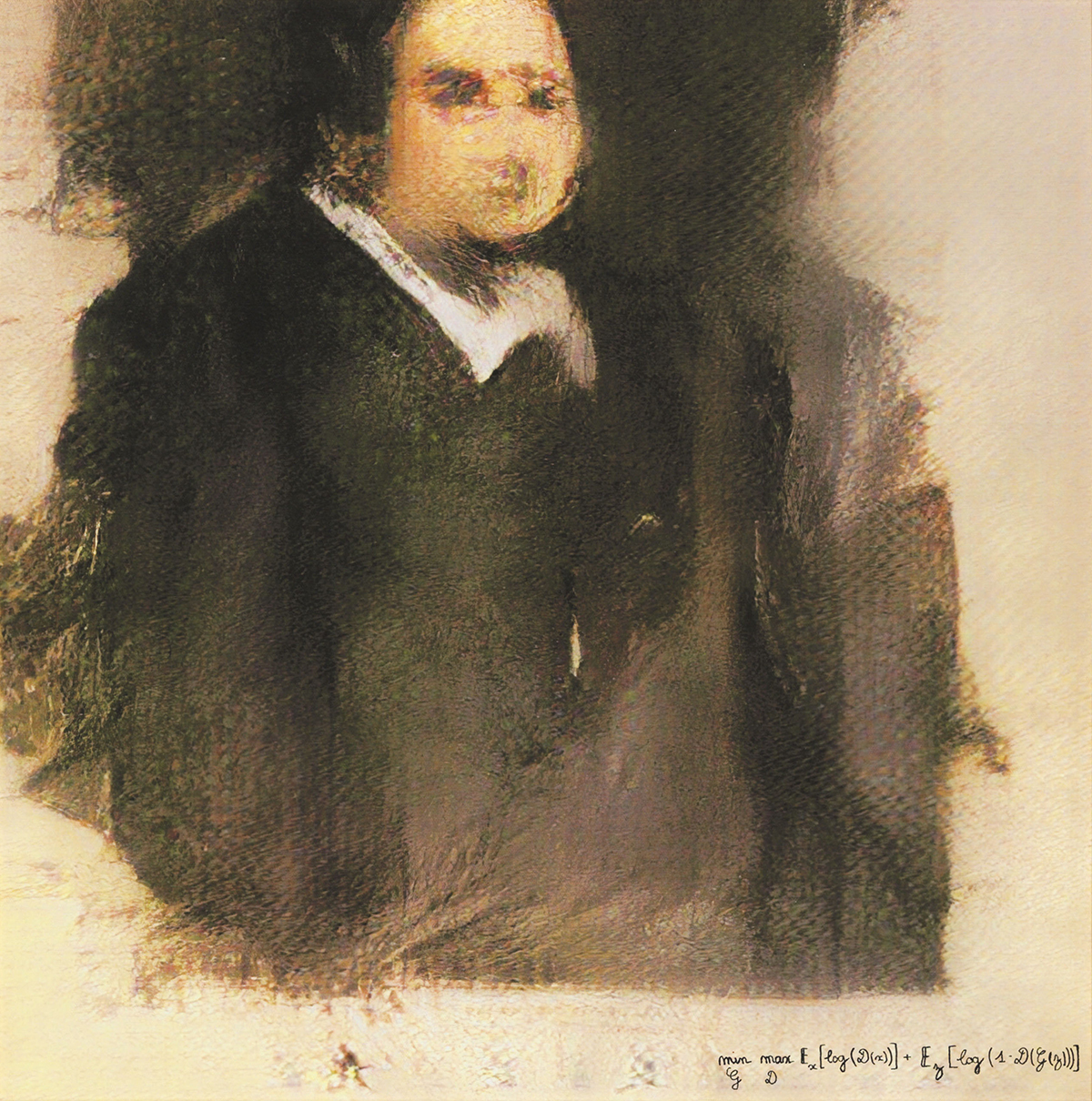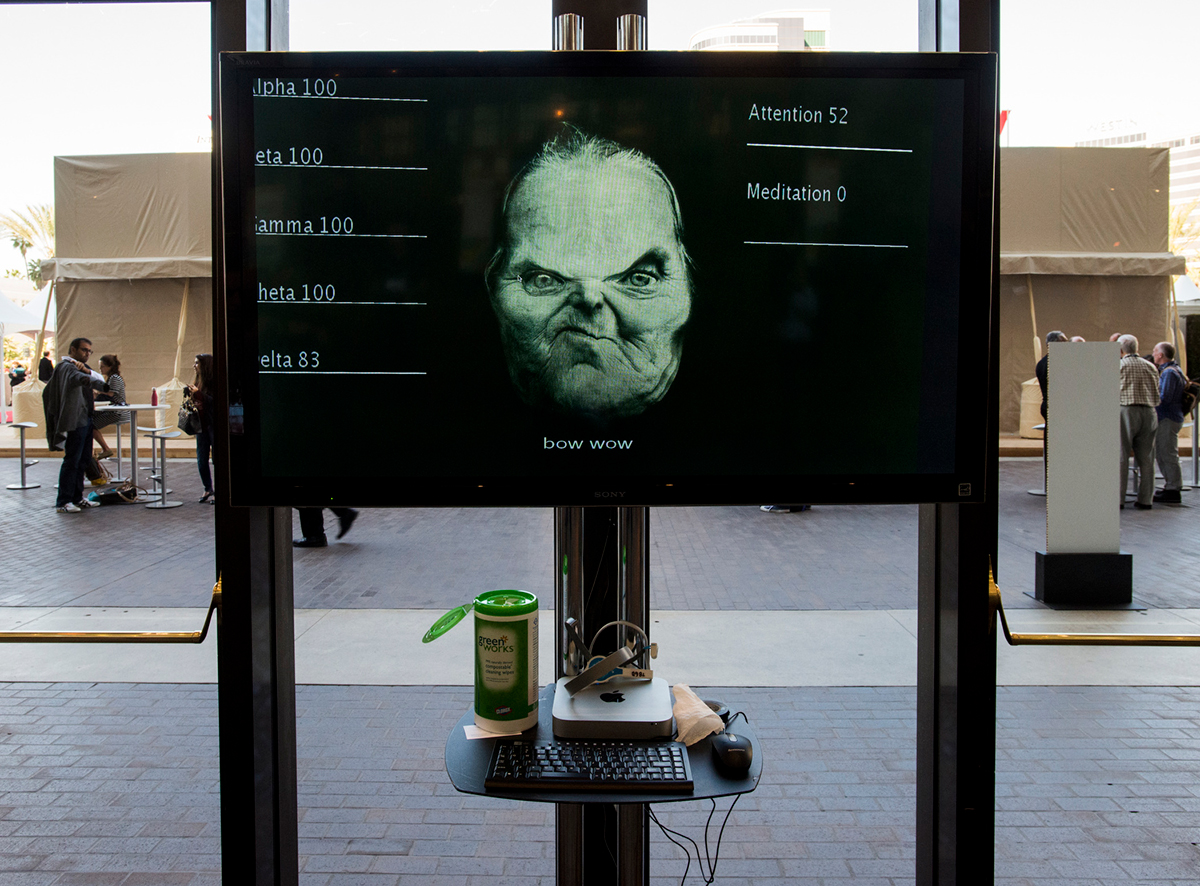ARTICLE
AI Art in India
An emerging practice in contemporary art, AI art is produced using artificial intelligence (AI) to engage observers at various levels of participation. While an AI artwork is understood, ultimately, to be a product of human artists, AI — while being carefully guided by its programming — is seen as a tool with enough autonomy to be considered a creative participant in the process.
Artificial intelligence is a branch of computer science that is defined as the ability of a computer or computer-controlled device to perform functions such as problem-solving, speech recognition and visual perception, simulating the human brain’s ability to perform these functions. Within AI, computing models made up of algorithms, neural networks and statistical models are the key building blocks. Artificial neural networks are inspired by biological neural networks and are used in the field of ‘deep learning’ to train a computer to learn by example. Applied to art, neural networks can be used to create artistic output. Among the common neural network models used are Generative Adversarial Networks (GANs) and Long Short-Term Memory (LSTM). The key challenge with AI art is that while programs can be trained to simulate visual perception by exposing them to vast data sets, they do not have the ability to understand how elements fit together in the images they produce. This often results in the generation of bizarre images. At such a stage, human intervention in the form of amendments to the code can help bring the images closer to the artists’ vision.
A GAN consists of two networks: a generator and a discriminator. Both networks are trained on human-compiled data, such as different images featuring one type of objects or images of a certain artistic style. The generator learns to produce images based on the dataset while the discriminator judges the output, rejecting it if it doesn’t match the dataset. The process is repeated until the generator creates an image that is approved by the discriminator. While GANs are useful for training machines using substantial amounts of data, LSTMs are useful in storing and applying relevant data according to context to generate new data.
Developed by Harold Cohen in the 1960s, the program AARON was one of the first tools used globally to create artistic abstract images and remained in use for a substantial period of time, with iterations such as colour-printing being added to it. The introduction of GANs in 2014 and Google’s DeepDream program in 2015 helped spur the development of AI art across the world. In 2018, the commercial potential of the format was in the spotlight after Christie’s auctioned an image — Portrait of Edmond Belamy, created by three French students using a GAN — for a very high sum of money, sparking a debate on notions of ownership and credit, given the open-source nature of GANs, and the value of AI art.
In October 2021, the Indian artist Raghava KK’s work, La Petite Mort — made in collaboration with the Indian AI artist Harshit Agrawal, neuroscientist Abhijeet Satani and material scientist Ben Tritt — sold for very high sums. The work, which used digital and AI tools, was an NFT with a physical artwork and represented data and a visual interpretation of the human brain during an orgasm. In April 2022, Raghava took the work forward by launching the art project, Cyborg Desires, which is also driven by AI tools. Other Indian AI artists have also tried to use the technology to tackle subjects such as ecology and nature, gender, politics, and the relationship between humans and machines.
Auria Kathi, an AI bot-artist, was developed by the Bengaluru-based designer Fabin Rasheed and Kochi-based engineer Sleeba Paul. It was given a public identity at the start of 2019, in the form of profiles on the social media platforms Instagram and Twitter, and a website. The bot’s profile image was AI-generated, as were the short poems and abstract artworks that it posted on a daily basis. The bot was fed around 350,000 examples of haikus to train itself to generate artificial verses on its own, while the images were generated using a text-to-image GAN which produced abstract art, after being trained on a dataset of four thousand curated artworks. The bot was exhibited at the Florence Biennale, Italy, and the Conference on Neural Information Processing Systems in 2019.
Harshit Agrawal’s (author)rise, a participative work created in collaboration with Japanese researchers Junichi Yamaoka and Yasuaki Kakehi, sought to highlight the fragmented authorship of digital text. One part of the program — trained on thousands of philosophical texts — used the text handwritten by a participant as a starting point to generate words, while another part, trained in handwriting, converted this generated text into handwriting, which the stylus began imprinting on the paper, even as it was held by the participant.
Strange Genders, another work by Agrawal, supported by 64/1, an arts research and curatorial collective, used GANs to examine gender. Agrawal collected a data set of more than 2,300 figures of male and female forms drawn by people from across the country to train a GAN on gender drawings. The same dataset was also used to train a binary classifier to identify figures as either male or female with a certain level of confidence. The GANs’ outputs were run through the binary classifier, which identified the figures on the trained parameters. The final output was two large circles, in the medium of archival prints. Figures that were identified with 100 percent certainty as female or male were in the centre, and those identified with less confidence were placed towards the outer edges of the circle.
In the world of video gaming, AI has been primarily used with the intent of enhancing a player’s experience of the game, usually by making non-playing characters more adaptive and reactive to the style of a player. Sahej Rahal, a multidisciplinary artist who also works with traditional formats such as painting and sculpture, experimented with the video game world in two artworks, finalforest.exe (2021) and Juggernaut (2019). In Juggernaut, Rahal applied the reactive trait of the AI to a blob, controlled by the player; when it encounters obstacles, it appends them to itself like limbs and learns to navigate itself and its environment based on this information. Finalforest.exe is a moving-image work, built on a video game engine with the central figure of a bipedal creature, modelled on gaming characters. Within the work, the figure moves through a series of diverse landscapes meant to evoke a sense of dystopia occurring in parallel to an audio narration that references political events, religious philosophy and nature.
In addition to the works of individual artists, art spaces have also hosted AI-related events. Emami Art, the Kolkata-based contemporary art gallery, hosted Agrawal’s first solo exhibition, EXO-stential – AI Musings on the Posthuman, in 2021. Prior to this, in 2018, Nature Morte had hosted Gradient Descent, curated by Agrawal, which featured seven artists in the field of AI art from Germany, India, Japan, New Zealand, Turkey, the UK and the US. Terrain.art, an Indian NFT-driven art platform also held an exhibition, Intertwined Intelligences, in which the works of six AI artists from India and around the world were registered as NFTs and were opened to digital ownership. The ZKM Centre for Art and Media, Karlsruhe, Germany has held iterations of its digital culture event, Open Codes, in India since 2018, in the form of exhibitions at the Gallery MMB, Goethe-Institut/Max Mueller Bhavan, Mumbai.
Bibliography
Our website is currently undergoing maintenance and re-design, due to which we have had to take down some of our bibliographies. While these will be re-published shortly, you can request references for specific articles by writing to hellomapacademy@map-india.org.








